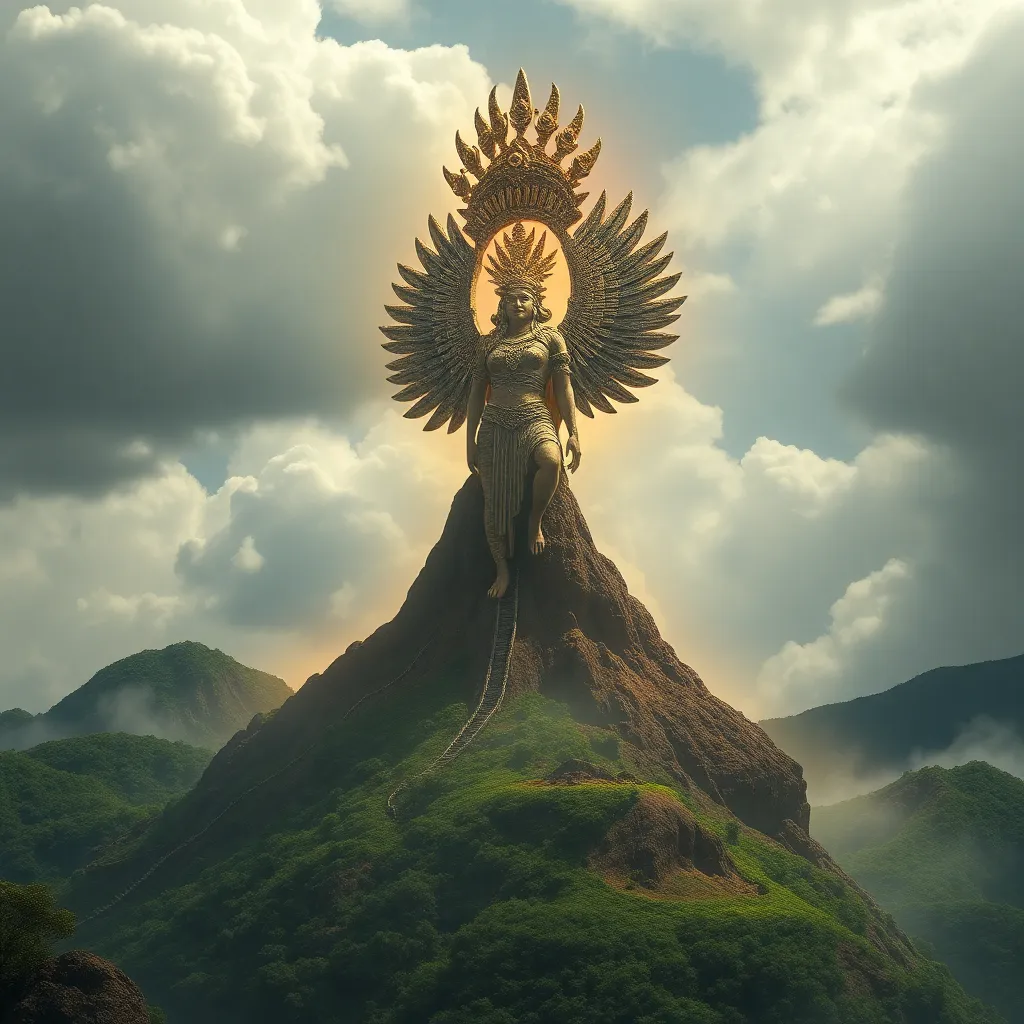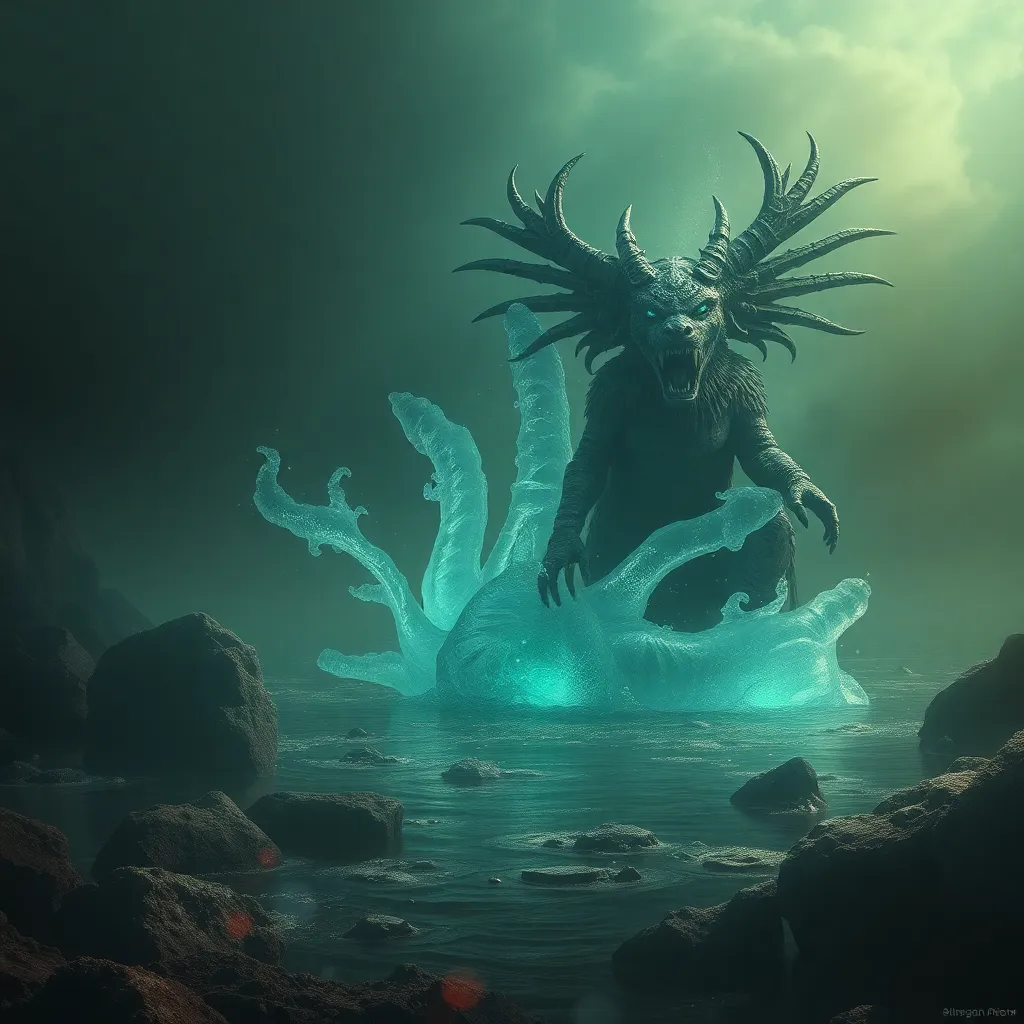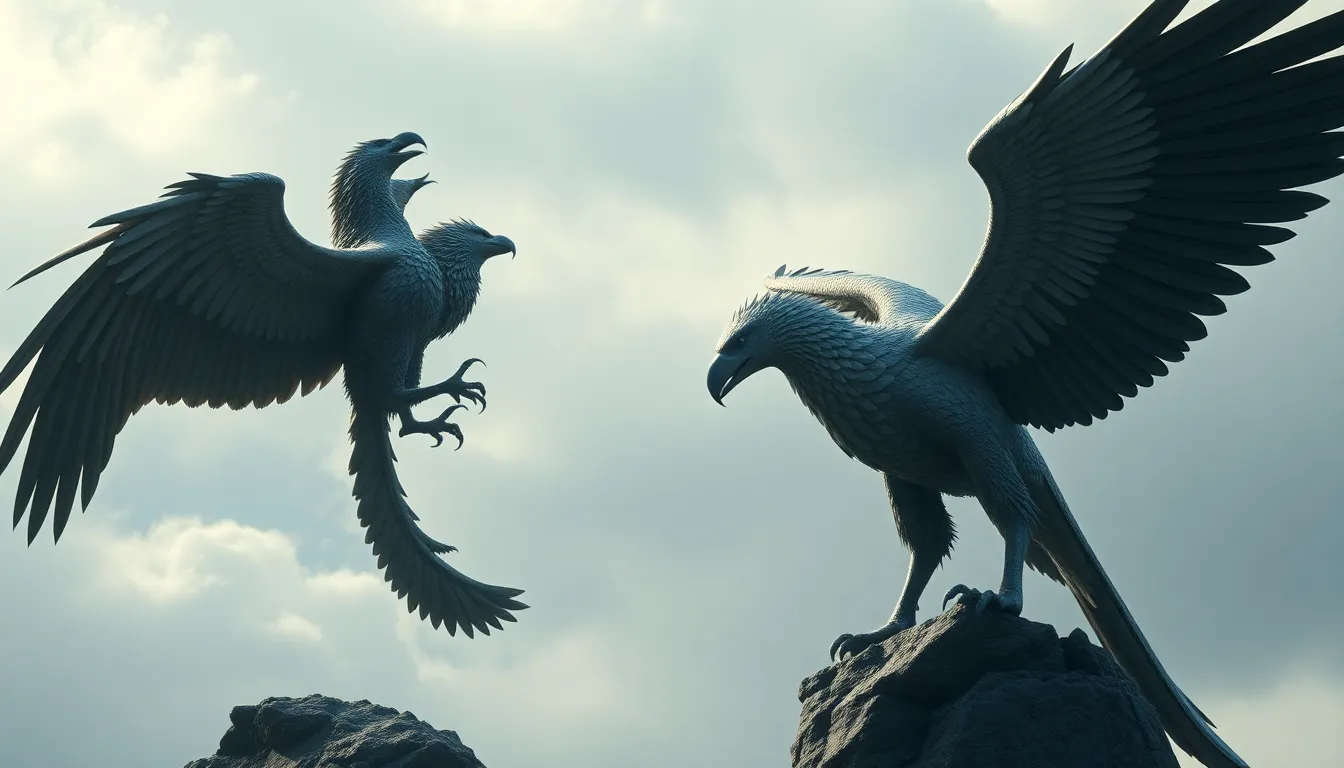The Goddess of the Volcanic Mountain: Coatlicue’s Connection to the Earth’s Natural Forces
I. Introduction
Coatlicue, a pivotal figure in Aztec mythology, embodies the intricate relationship between life, death, and the natural world. Her complex character as a goddess of fertility, earth, and the underworld places her at the center of many mythological narratives that define the Mesoamerican worldview. Volcanic mountains, which punctuate the landscapes of this region, hold immense significance in both the physical and spiritual realms, serving as symbols of creation and destruction. This article aims to explore Coatlicue’s profound connection to these natural forces and her enduring legacy in Aztec culture.
II. The Mythology of Coatlicue
Coatlicue, often referred to as “the Serpent Skirt,” is a goddess whose origins are steeped in rich mythology. She is considered the mother of several important deities, including Huitzilopochtli, the god of war, and Coyolxauhqui, the moon goddess. Her familial ties and the narratives surrounding her illustrate the complexities of Aztec beliefs regarding life, death, and rebirth.
Symbolism plays a crucial role in understanding Coatlicue. She is depicted with a skirt made of serpents, symbolizing her connection to the earth and its primal forces. Her attributes, such as her fierce, maternal nature and her embodiment of both creation and destruction, highlight the duality present in her character. This duality is central to her narrative, as she represents the cycle of life—giving birth to gods while also being associated with the earth’s violent forces.
III. The Volcanic Landscape of Mesoamerica
Mesoamerica is home to several key volcanic mountains, including Popocatépetl and Iztaccíhuatl, which hold both geographical and cultural significance. These majestic peaks have shaped the region’s ecosystem and influenced the lifestyle of indigenous peoples for centuries.
- Popocatépetl: An active stratovolcano that is revered in Aztec mythology, symbolizing strength and endurance.
- Iztaccíhuatl: A dormant volcano often associated with the legend of a sleeping princess, representing the duality of beauty and death.
- Other notable volcanoes: Cerro Blanco, San Miguel, and the Sierra Madre range, which contribute to the region’s rich biodiversity.
The historical and ongoing volcanic activity in Mesoamerica has had significant impacts on the environment, affecting agriculture, settlement patterns, and cultural practices. The indigenous peoples of the region have revered these mountains, seeing them as embodiments of powerful deities that govern natural forces.
IV. Coatlicue and the Natural Forces
Coatlicue’s mythology intricately weaves together the elements of earth, fire, and water, reflecting her connection to the natural forces that shape the world. She represents the fertility of the earth, the destructive power of volcanic eruptions, and the life-giving properties of water. This triad highlights her role in maintaining the balance between destruction and creation.
Her dual nature embodies the cycles of agricultural production and renewal, essential themes in Aztec life:
- Destruction: Volcanic eruptions and natural disasters that can devastate crops and communities.
- Fertility: The ash from eruptions enriches the soil, promoting new growth and life.
Coatlicue’s connection to agricultural cycles emphasizes the importance of respecting nature and understanding the balance necessary for survival. Her presence is a reminder of the interdependence between humanity and the earth.
V. Rituals and Worship Practices
Rituals dedicated to Coatlicue were integral to Aztec religious practices, focusing on appeasing her and ensuring her favor. Ceremonial practices included:
- Offerings of food, flowers, and other items to honor the goddess.
- Festivals that celebrated the cycles of nature and agricultural abundance.
- Ritualistic dances and songs performed to invoke her blessings.
Volcanic eruptions were often interpreted as signs from the gods, leading to specific religious rituals aimed at appeasing Coatlicue and other deities. These rituals served as a means to maintain harmony between the natural world and human existence, reinforcing the belief in divine intervention in earthly matters.
VI. Artistic Representations of Coatlicue
The iconography of Coatlicue is prominently featured in Aztec art and sculpture, showcasing her significance in the cultural landscape. Artistic representations often highlight her serpent skirt, skull necklace, and fierce countenance, elements that reinforce her dual nature as both a nurturing mother and a fearsome goddess.
The symbolism of her imagery resonates with volcanic themes, as her fierce and tumultuous nature embodies the unpredictable forces of nature. Modern interpretations of Coatlicue continue to evolve, reflecting contemporary values and the resurgence of interest in indigenous mythology.
VII. Coatlicue in Contemporary Culture
In recent years, there has been a resurgence of interest in indigenous mythology, with Coatlicue emerging as a powerful symbol in modern spirituality and environmental movements. Her image is often used to promote awareness of natural forces and the need for environmental stewardship.
Coatlicue’s influence extends beyond traditional mythology, inspiring:
- Artistic expressions that celebrate indigenous heritage.
- Activism focused on protecting the environment and advocating for indigenous rights.
- Spiritual practices that emphasize the connection between humanity and nature.
VIII. Conclusion
Coatlicue stands as a significant figure in Aztec mythology, embodying the powerful forces of nature and the intricate balance between life and death. Her connection to volcanic mountains underscores the importance of understanding and respecting the natural world. The enduring legacy of Coatlicue serves as a reminder of the wisdom found in indigenous cultures and the necessity of preserving these narratives in contemporary discussions about nature and spirituality.




